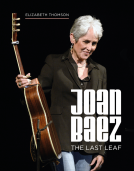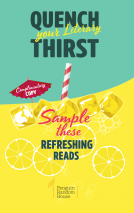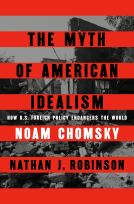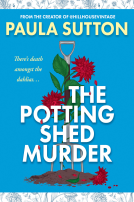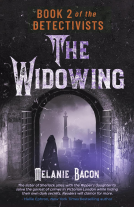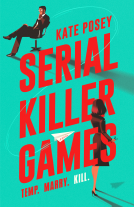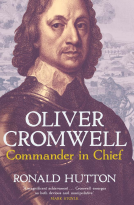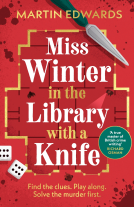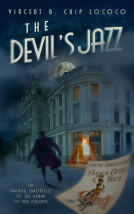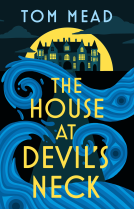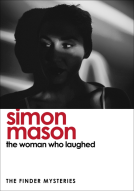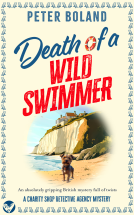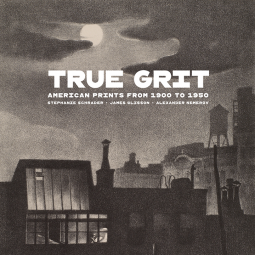
True Grit
American Prints from 1900 to 1950
by Stephanie Schrader; James Glisson; Alexander Nemerov
This title was previously available on NetGalley and is now archived.
Send NetGalley books directly to your Kindle or Kindle app
1
To read on a Kindle or Kindle app, please add kindle@netgalley.com as an approved email address to receive files in your Amazon account. Click here for step-by-step instructions.
2
Also find your Kindle email address within your Amazon account, and enter it here.
Pub Date Oct 22 2019 | Archive Date Apr 14 2020
Getty Publications | J. Paul Getty Museum
Talking about this book? Use #TrueGrit #NetGalley. More hashtag tips!
Description
In the first half of the twentieth century, a group of American artists influenced by the painter and teacher Robert Henri aimed to reject the pretenses of academic fine art and polite society. Embracing the democratic inclusiveness of the Progressive movement, these artists turned to making prints, which were relatively inexpensive to produce and easy to distribute. For their subject matter, the artists mined the bustling activity and stark realities of the urban centers in which they lived and worked. Their prints feature sublime towering skyscrapers and stifling city streets, jazzy dance halls and bleak tenement interiors—intimate and anonymous everyday scenes that addressed modern life in America.
True Grit examines a rich selection of prints by well-known figures like George Bellows, Edward Hopper, Joseph Pennell, and John Sloan as well as lesser-known artists such as Ida Abelman, Peggy Bacon, Miguel Covarrubias, and Mabel Dwight. Written by three scholars of printmaking and American art, the essays present nuanced discussions of gender, class, literature, and politics, contextualizing the prints in the rapidly changing milieu of the first decades of twentieth-century America.
This volume is published to accompany an exhibition on view at the J. Paul Getty Museum at the Getty Center October 15, 2019, to January 19, 2020.
Available Editions
| EDITION | Other Format |
| ISBN | 9781606066270 |
| PRICE | $35.00 (USD) |
| PAGES | 112 |
Links
Featured Reviews
A Real Treat
This publication accompanies the Exhibition of the same name that will be at the Getty in L.A. until January, 2020. While the title suggests that the Exhibition comprises a wide range of artists and works, it's actually closely focused on a few artists who were active in New York City, especially in the and around the 1915's to 1930's. We're talking here about Edward Hopper, George Bellows, Mabel Dwight, Peggy Bacon and a few others, most of whom were strongly influenced by Robert Henri, and that can only be good. Every plate represents another daily scene of gritty urban life, but the artistic approaches and points of view and subjects are as wide and varied as the City itself.
The book is fairly brief. The illustrated text is less than forty pages. This is supplemented, though, by another forty pages of plates of all of the work addressed in the Exhibit. This means the reader can enjoy reading and thinking about the text, but can then study each individual piece of work than seems especially arresting.
And the special treat here is the text. I don't know if it is universally true, but every Getty Exhibit book I've read has been a success. I don't know if it's intentional or not, but these publications always have an inviting and congenial feel that avoids dry pedantry in favor of fresh, energetic, and enthusiastic appreciation and insight.
This time around, in addition to an engaging Introduction, we get three interesting essays. Stephanie Schrader addresses the gendered experiences of the artists that influenced their work, and does so with great style and keen observation. James Glisson starts with promise of New York City, takes us on a tour of skyscrapers, and then moves us through light and dark into the cramped spaces. It is a marvelous and wide ranging essay that directs the reader to the details of many of the included works. Alexander Nemerov offers us a masterful analysis of the relationship, personal and professional, between Edward Hopper and George Bellows. I don't know how mainstream or how idiosyncratic Nemerov's observations are, but they are undeniably fascinating.
So, this small gem of a book was a delight from beginning to end, and struck me as a work of wide appeal and great reward. A very nice find.
(Please note that I received a free advance will-self-destruct-in-x-days Adobe Digital copy of this book without a review requirement, or any influence regarding review content should I choose to post a review. Apart from that I have no connection at all to either the author or the publisher of this book.)
 Librarian 431790
Librarian 431790
A fascinating book with three interesting essays and tons of amazing pictures.
It made me crave to see the exhibition.
Highly recommended!
Many thanks to the publisher and Netgalley for this ARC, all opinions are mine
A look at several influential artists of the early 20th century, and a love letter to the gritty city. It is curiously poignant to look through this book now, as our cities are temporarily shut down by quarantine, and see the mass of humanity captured in the drawings and paintings. Even without seeing the exhibit this book was created to accompany at the Getty, the reader will get a real feeling for the tone of the included works.
 Reviewer 573205
Reviewer 573205
True Grit is a great deep dive into the subject of American prints from 1900-1950. Readers will recognize iconic images as well as ones new to them. The individual essays are informative and bring new insights to a number of prints. I particularly enjoyed reading Alexander Nemerov's essay on Edward Hopper and the trajectory of his career following the death of his close friend George Bellows, a writing on both guilt and the power dynamics of artistic competition.
 Andrew S, Reviewer
Andrew S, Reviewer
This book takes a look at printmaking in the first half of the twentieth century, which largely seemed to feature images of urban activity and cityscapes, the latter often at night. There are works by some highly respected artists here, the most notably for me being those produced by celebrated realist painter Edward Hopper. Some of these works are really quite stunning.
The images are supported by essays providing a good insight into the history of the form and the artists themselves. The book itself was created to accompany an exhibition of prints at the Getty Museum in Los Angeles, which was scheduled to run until January 2020. This book should obviously be of interest to anyone with an existing interest in prints but also people like me who are relatively ignorant of the form but stand in awe of people who have the ability to produce amazing images using just the most basic of instruments and their own talent.
True Grit: American Prints from 1900 to 1950, edited by Stephanie Schrader, is yet another Getty offering that is both visually and intellectually engaging. This exhibition catalogue includes several essays that engage the works as both products of their time and as works using methods that allow for wider distribution.
While the essays are written by experts and are thus detailed, they do not fall into the trap of being dry or too bogged down by minutiae. The smaller pictures within the body of the essays and the large plates in the last half of the book, when coupled with the information in the essays, gave me a much better appreciation for the works, the artists, and what they were trying to do.
I am the type of reader that has some basic understanding of art but am far from being well-versed. This book was readily accessible to someone like me and, I think, would also offer a lot even for students (formal or informal) of art. I have to admit that I was, for several days, totally engrossed with this book and anticipate coming back to it periodically. I read it one day and spent some time going from images to words and back, then thought I was finished. But something would cross my mind, maybe wanting to check an image closer, maybe wanting to see if what I thought I saw was actually in the print. I kept coming back and was never let down when I did.
Highly recommended both for the stunning plates and the thought-provoking essays.
Reviewed from a copy made available by the publisher via NetGalley.
 Richard L, Reviewer
Richard L, Reviewer
I'm not a real connoisseur of art in any form; I cannot pretend to speak with any great depth of understanding or awareness. I love history and the lives of ordinary people. So photographs can
sometimes capture some realism and cartoons elevate social mores.
I was drawn to this book as it depicts 50 years of American history particularly through New York city, the first half of the 20th century when that great nation was flexing its muscles and learning about itself.
The cover says: "An engaging look at early twentieth-century American prints focusing on the crowded, chaotic, gritty modern city."
There is an movement of artists, influenced by the painter and teacher Robert Henri, who grasp the opportunity this inexpensive medium of print can reach a wider audience. They seek to improve the world by showing its imperfections; that art had the power to show, define and fascilitate social change. As an englishman I thought of this comparison that art was active in New York where Dickens before them in London used literature to convey his ideas.
The art is social commentary, recording life within the metropolis; advancement but teeming masses living cheek by jowl in overcrowded tenements.
I liked that each artist was different in their style and observation; some prints look more like cartoons where others use light and shade. Overall you have the opportunity to study each plate and feel the texture and life seep out of the illustrations. In black and white the sense of light in some prints is overwhelming while some seem to portray the grim and shadows of an industrial city, reaching for its maker in ever taller skyscrappers. The people seem both real and larger than life depending on the artist, but each conveys this sense of time and place.
George Bellows for example take us from the ballet of a boxing ring to the intensity of dancing in a madhouse. One of the most pleasing illustrations if July 4th by Kyra Markham 1936 where the illumination is quite magical across the crowd. It was also good to compare her style further from her Night Club reproduction 1935 against Miguel Covarrubias, The Lindy Hop 1935.
Three scholarly essays bring greater clarity and understanding. The book will make readers visiting New York to want to visit the accompanying exhibition but for less mobile consumers the collection will adorn their coffee table to delight family and guests.
I understand art a little more and this book took me gently on that journey.
 Sharon T, Reviewer
Sharon T, Reviewer
True Grit: American Prints from 1900 to 1950 by Stephanie Schrader, James Glisson and Alexander Nemerov is being published to accompany an exhibition on view at the J. Paul Getty Museum at the Getty Center October 15, 2019, to January 19, 2020. It is currently set for release on October 22 2019.
In the first half of the twentieth century, a group of American artists influenced by the painter and teacher Robert Henri aimed to reject the pretenses of academic fine art and polite society. Embracing the democratic inclusiveness of the Progressive movement, these artists turned to making prints, which were relatively inexpensive to produce and easy to distribute. For their subject matter, the artists mined the bustling activity and stark realities of the urban centers in which they lived and worked. Their prints feature sublime towering skyscrapers and stifling city streets, jazzy dance halls and bleak tenement interiors—intimate and anonymous everyday scenes that addressed modern life in America. This exhibition and book examines a rich selection of prints by well-known figures like George Bellows, Edward Hopper, Joseph Pennell, and John Sloan as well as lesser-known artists such as Ida Abelman, Peggy Bacon, Miguel Covarrubias, and Mabel Dwight. It is written by three scholars of printmaking and American art, the essays present nuanced discussions of gender, class, literature, and politics, contextualizing the prints in the rapidly changing milieu of the first decades of twentieth-century America.
True Grit is an interesting read. Art history and interpretation is not my field of study, or even a hobby, but I love exploring new things. This book definitely fits that. I really enjoyed getting to look at works I had never seen before, and learning about the history and ideas involved in the artwork and the times. I will admit that some of the text was about something I have never really studied before, and I found it interesting but not something I will continue to research and explore. The art itself was the star for me, and why I actually requested the book to be honest. I think the essays were well written and researched. I found the information and ideas to be interesting and think that art buffs, artists, and those in the closest related fields will definitely get more out of this than I, but I am still very glad that I took a step out of my comfort zone and had the chance to look at some art I have never seen, and learn something at the same time.
 Account D, Reviewer
Account D, Reviewer
True Grit: American Prints from 1900-1950 by Stephanie Schrader is a free NetGalley ebook that I read in late September.
Mottled, sketched, etched, coal-rubbed art of urban, high-rise, observational, seeing and being-seen social scenes.
 Reviewer 565007
Reviewer 565007
Really nice images included in this book, thoroughly enjoyed going through and seeing them. The inclusion of so much information about each of the pictures was also greatly appreciated and added something extra, that some books of the same genre seem to be missing.
Readers who liked this book also liked:
Keith Martin; Konstantinos Mersinas; Guido Schmitz; Jassim Happa
Business, Leadership, Finance, Computers & Technology, Reference
Vincent B. "Chip" LoCoco
Historical Fiction, Horror, Mystery & Thrillers
